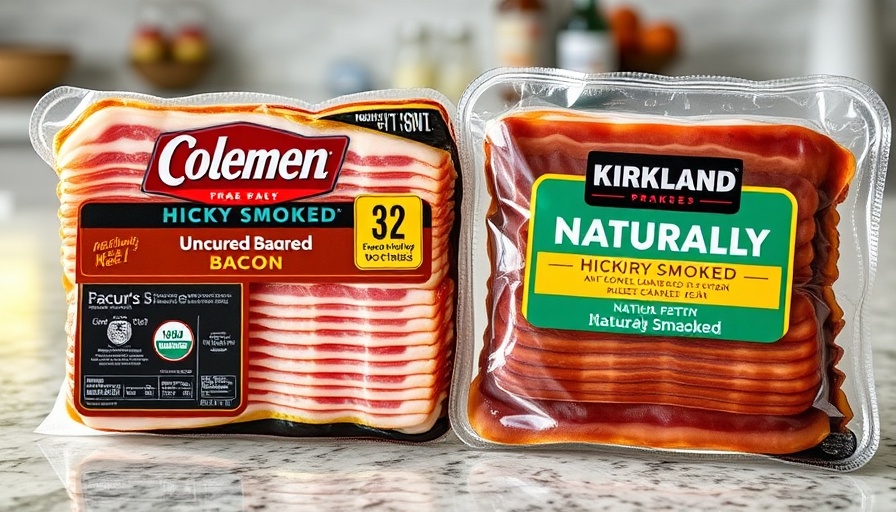
Bacon Showdown: Kirkland vs. Coleman in the Ultimate Taste Test
Bacon lovers unite! If you're anything like me, bacon often finds its way into your grocery cart and is a staple in your freezer. But while we all adore this savory treat, not all bacon is created equal, and when it comes to bulk buying at Costco, the Kirkland brand and Coleman Bacon often go head-to-head. I ventured into this delicious dilemma to discover which one deserves a spot in your kitchen.
The Appearance Playoff: What Do They Look Like?
Before firing up the air fryer, I took a good look at both bacon options. Both the Kirkland and Coleman bacon had their unique qualities. The slices from both brands were fairly similar in thickness, but there was a noticeable difference in fat content—the Kirkland strips looked a bit fattier, while the Coleman bacon sported a more meaty appearance. This first impression set the tone for the ultimate bacon duel!
Cooking Time: Can Air Fryers Save the Day?
For a fair cook-off, both types of bacon were crisped in the air fryer, standardizing the cooking time to 400°F for 10 minutes. The sizzling sound alone could send any bacon enthusiast into a daydream! After removing the bacon from their cooking chambers, I was able to observe some significant differences right off the bat, especially in how much grease was left behind in the tray—12 grams for Coleman versus a whopping 31 grams for Kirkland.
Flavor Fight: Which One Hits the Spot?
The taste test was where our two contenders truly showcased their differences. Coleman bacon enveloped my taste buds with a robust and meaty flavor, while Kirkland's version came off a bit saltier on the palate. With 320 mg of sodium per serving for Kirkland and 280 mg for Coleman, it made sense why Kirkland had that salty kick. However, bacon lovers know that flavor reigns supreme, and Coleman took the crown for a more flavorful experience.
Texture Trouble: Which Is More Satisfying?
Moving on to texture, both bacons crisped nicely and crumbled well for adding to recipes. However, Coleman bacon had that delightful chewiness that lingered, bringing a satisfying bite. Kirkland's bacon leaned a bit brittle, which might not be everyone's favorite. The different textures hint at depth; Coleman offers more in terms of mouthfeel and overall enjoyment.
Packaging Perspective: Is It Easy to Handle?
A surprise element for me was the packaging! Coleman’s neatly arranged box was user-friendly, while Kirkland’s flimsy, slippery packaging was quite the opposite. Struggling with a wobbly package can put a damper on your grocery experience, right? This small detail stuck with me as I navigated through my bacon adventure.
The Final Verdict: Is Kirkland Bacon Worth It?
In conclusion, both Kirkland and Coleman bacon have their merits, but if you ask me, Coleman bacon stole the show and left a lasting impression. The extra juiciness and rich flavor make it worth the slight price increase. So, next time you're strolling through Costco, consider this bacon face-off before filling your cart with the Kirkland brand.
Whether you’re gearing up for a weekend brunch or sneaking some crispy bacon into a weekday breakfast sandwich, the right bacon can make all the difference! So, treat yourself to the deliciousness of Coleman bacon and elevate your meals.
 Add Row
Add Row  Add
Add 







Write A Comment